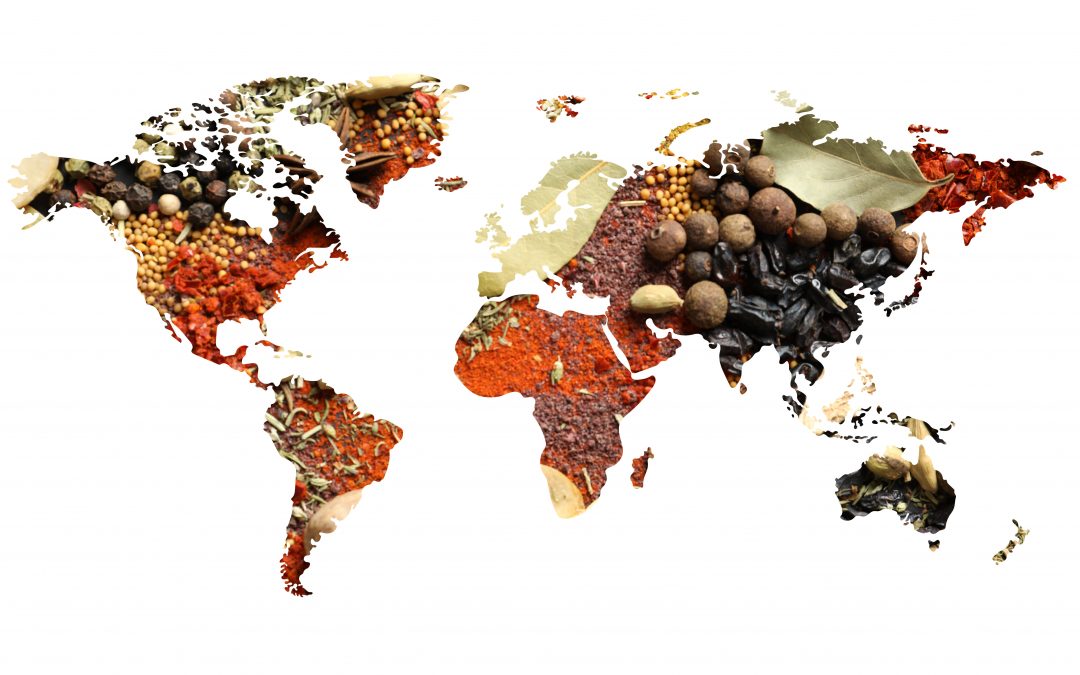By Norman Anthony Balberan
Since ancient times, spices have played a vital role in society. They have been a driving force behind many aspects of history, from political to economic, and even religious. Spices used to find their homes only in the respective geographical areas in which they were grown. But that later changed due the spice trade.
The spice trade began almost 4,000 years ago as soon as humans left their primitive hunter-gatherer stages of development. Spices were sought on many occasions to be used for bartering for other goods and traveled long distances to reach their trading points on continents across Asia and Europe.
The main spices involved were pepper, ginger, cardamom, turmeric, nutmeg, and cinnamon. Spices such as these were used mainly to preserve food but also used for meditation rituals by Buddhists and yoga sessions by Hindus. During the Middle Ages, spices such as saffron were used to heal diseases, but saffron was only accessible to wealthy people due to exorbitant prices.
Spice trading took on a pivotal role in history between the 15th century and 17th century when Portugal, Spain, and Holland fought for control over routes and territories.
The countries involved in the spice trade relied heavily upon them to keep people fed in impoverished land areas. Without spices, food was considered bland and unappetizing because spices were so expensive at that time that only wealthy people could afford them.
During that time, spices were considered to be more valuable than gold or silver because of their rarity and exotic nature. The most common spices used were ginger, cinnamon, nutmeg, cardamom, pepper, and turmeric. The most popular spice up until 1492 was black pepper due to its ease of transport.
However, when Christopher Columbus discovered the New World, which included South America, where the chili pepper originated, the popularity shifted from black pepper to chili peppers due to its lower cost and increased availability. Herbs like sage, mint, basil, and thyme were also used in cooking during this period but not nearly as popular as spices were, for they usually grew locally and seasonally.
The long-distance traveling during this time was done by boat, where spices would travel using the monsoons. The first leg of the journey took them from Asia to Africa, then up north into Europe, where they traded with different countries for goods like gold, silver, and ivory.
Upon returning to Asia across the Indian Ocean, another trade would take place to get spices like cloves, nutmeg, and mace, which came from Madagascar, the northern coast of Indonesia, or parts of southeast Asia. Then these spices returned to be distributed again, only this time it was through Europe. The Dutch East India Company (VOC) was one of the most successful companies involved in the spice trade until it went bankrupt in 1800.
The spice trade has had a significant impact on the world, culinary and otherwise. It introduced spices and herbs to new regions, and it built and destroyed empires and countries alike. Its legacy lives on today through the different types of cuisines we see all over the world.
Today, spices are still expensive but not nearly as much as they were due to advances in technology such as refrigeration, making them easier to store for more extended periods than during the 15th century. They would quickly spoil if not used immediately. Since most kitchens now have access to both fresh and dried spices, many cultures will incorporate both into their cuisine, although some dishes may heavily favor each other.
The most popular spices, herbs, and seasonings today are still the ones that have been around for a very long time, such as black pepper, garlic, oregano, basil, and thyme. They are not as expensive as they were during the 16th century, but they still retain their importance in society today, proven by their enduring popularity.






